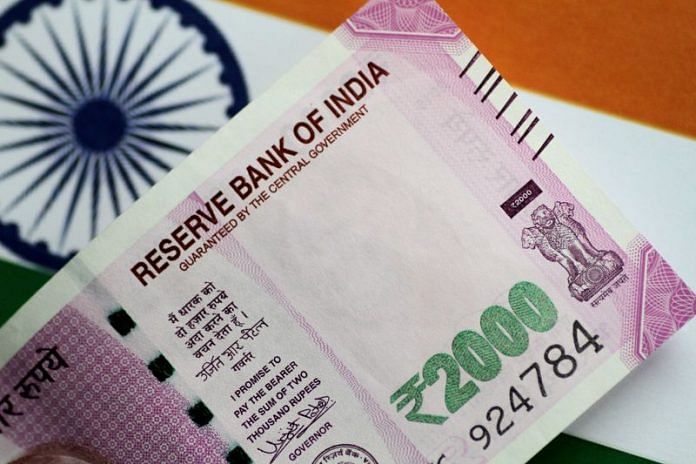Mumbai: The Indian central bank’s decision to withdraw its highest denomination currency note from circulation is likely to improve banking system liquidity, bringing down recently elevated short-term rates, analysts and bankers said.
The Reserve Bank of India on Friday said that it will start withdrawing 2,000-rupee notes from circulation, although they will remain legal tender. Customers holding these notes can deposit them or exchange them for smaller notes by Sept.30, 2023.
The value of such notes in circulation is 3.6 trillion rupees ($44.02 billion).
Kotak Institutional Equities estimates that liquidity could improve by around 1 trillion rupees, while QuantEco Research pegs the potential liquidity impact at 400 billion rupees to 1.1 trillion rupees.
ICICI Securities Primary Dealership estimates the liquidity surplus could increase to 1.5-2 trillion rupees.
India’s banking system liquidity surplus has averaged around 600 billion rupees so far in May.
About 2.5-3 trillion rupees of banking sector liquidity leaks out as currency in circulation each year, said Pranjul Bhandari, chief India economist at HSBC.
“As such, markets may anticipate some comfort on the liquidity front.”
Most economists expect the note withdrawal to be less disruptive for the economy than the 2016 demonetisation.
Impact on rates
If liquidity surplus improves sharply because of this move, “the weighted average call rate could sustain below the repo rate for the next few weeks,” said Raju Sharma, chief investment officer – debt at IDBI Mutual Fund.
The overnight inter-bank rate eased below the policy repo rate of 6.5% over the last couple of sessions.
Short-term interest rates for government securities, bank bulk deposits and corporate borrowings will also likely ease.
Treasury bill auctions will see good demand in the coming weeks, said Rajeev Pawar, head of treasury at Ujjivan Small Finance Bank.
This would eventually spillover to three-year and five-year bonds, he said. The yield on these notes eased 7-8 basis points (bps) on Monday, while the benchmark 7.26% 2033 bond yield dipped 4 bps.
Bond yield curve may bull steepen
The shorter-end of the yield curve could see a fall in rates as cash conditions improve, but long-end yields may move higher over the medium term with much-anticipated open market bond purchases as well as domestic policy easing getting delayed, traders said.
The yield curve is, therefore, likely to bull steepen in the coming months, they said.
The demand for short-end bills and bonds to meet banks’ statutory liquidity ratio requirements amid increased deposits would be higher as the funds could easily move back into circulation, said Madhavi Arora, lead economist at Emkay Global Financial.
“The longer end will likely rise as markets re-adjust their open market purchase expectations for the second half of fiscal 2024,” she added.
As liquidity improves, the monetary policy committee is likely to maintain status quo on rates and stance at least until August, said Siddharth Kothari, an economist at Sunidhi Securities & Finance.
($1 = 81.7800 Indian rupees)
(Reporting by Siddhi Nayak; additional reporting by Dharamraj Dhutia; Editing by Sonia Cheema)
Disclaimer: This report is auto generated from the Reuters news service. ThePrint holds no responsibilty for its content.



